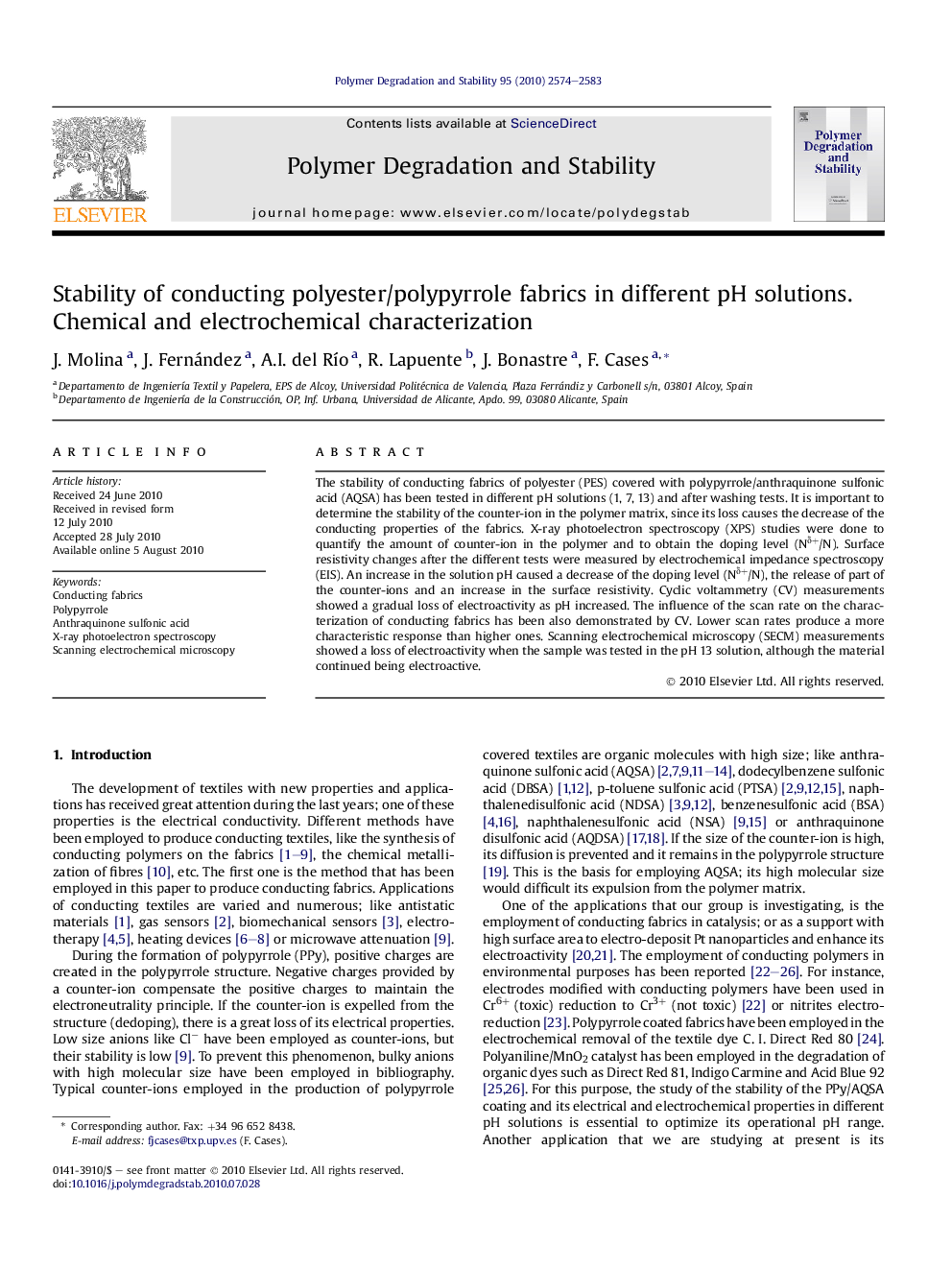| Article ID | Journal | Published Year | Pages | File Type |
|---|---|---|---|---|
| 5203207 | Polymer Degradation and Stability | 2010 | 10 Pages |
Abstract
The stability of conducting fabrics of polyester (PES) covered with polypyrrole/anthraquinone sulfonic acid (AQSA) has been tested in different pH solutions (1, 7, 13) and after washing tests. It is important to determine the stability of the counter-ion in the polymer matrix, since its loss causes the decrease of the conducting properties of the fabrics. X-ray photoelectron spectroscopy (XPS) studies were done to quantify the amount of counter-ion in the polymer and to obtain the doping level (Nδ+/N). Surface resistivity changes after the different tests were measured by electrochemical impedance spectroscopy (EIS). An increase in the solution pH caused a decrease of the doping level (Nδ+/N), the release of part of the counter-ions and an increase in the surface resistivity. Cyclic voltammetry (CV) measurements showed a gradual loss of electroactivity as pH increased. The influence of the scan rate on the characterization of conducting fabrics has been also demonstrated by CV. Lower scan rates produce a more characteristic response than higher ones. Scanning electrochemical microscopy (SECM) measurements showed a loss of electroactivity when the sample was tested in the pH 13 solution, although the material continued being electroactive.
Keywords
Related Topics
Physical Sciences and Engineering
Chemistry
Organic Chemistry
Authors
J. Molina, J. Fernández, A.I. del RÃo, R. Lapuente, J. Bonastre, F. Cases,
